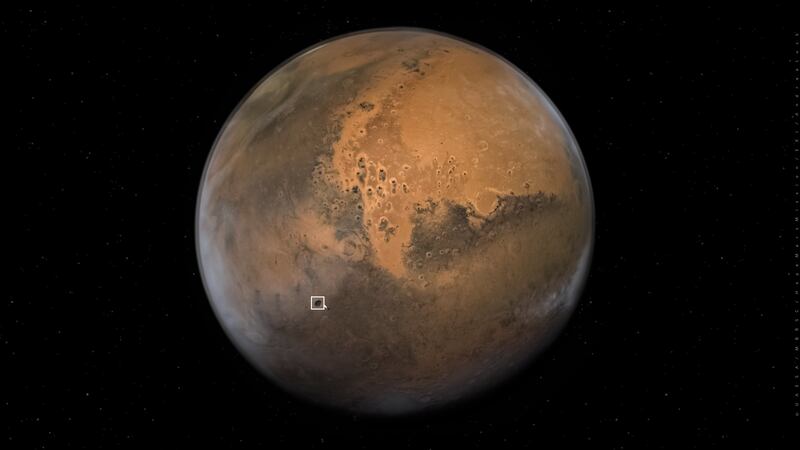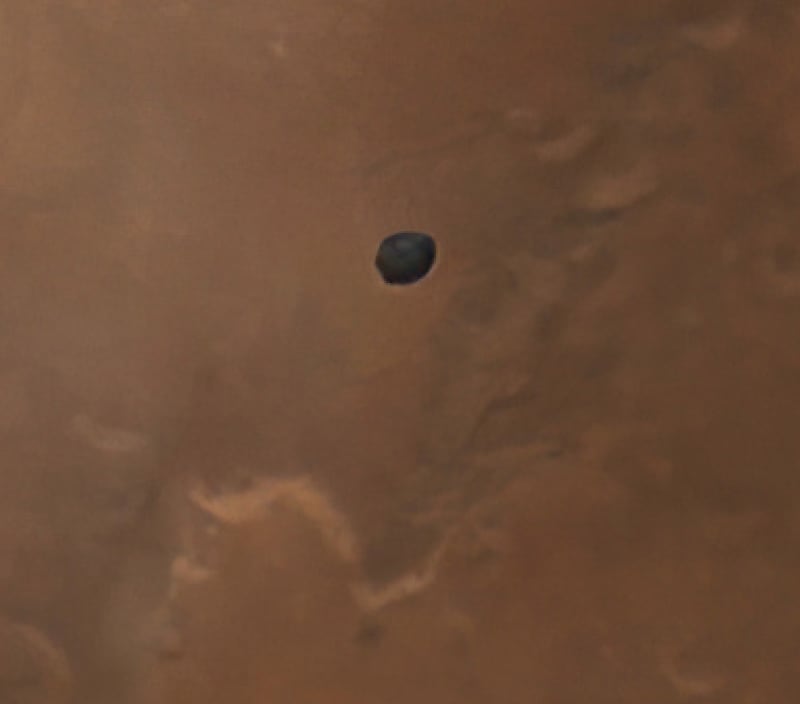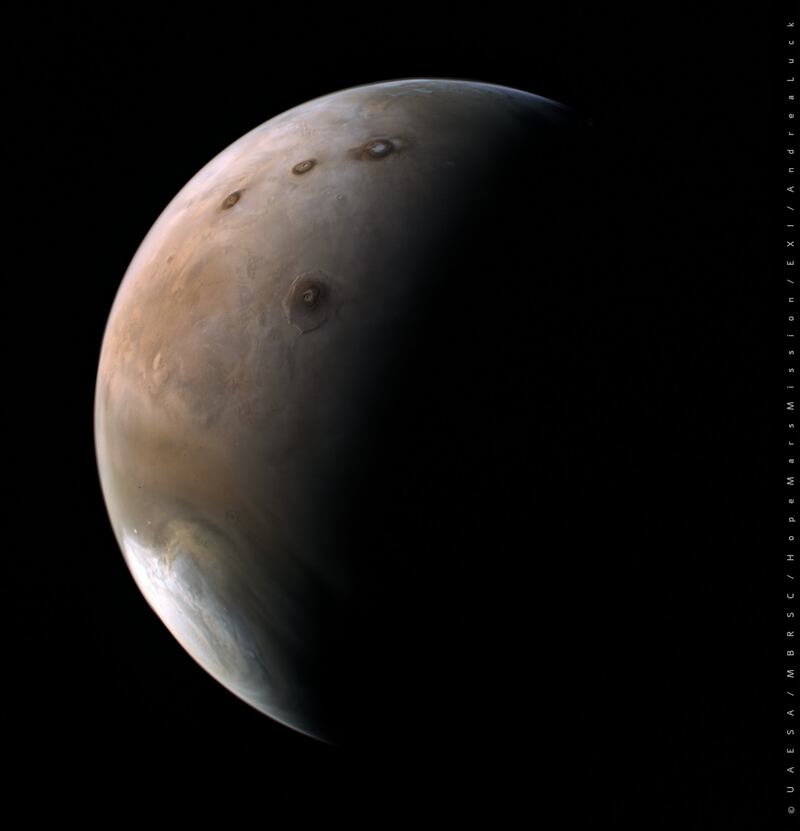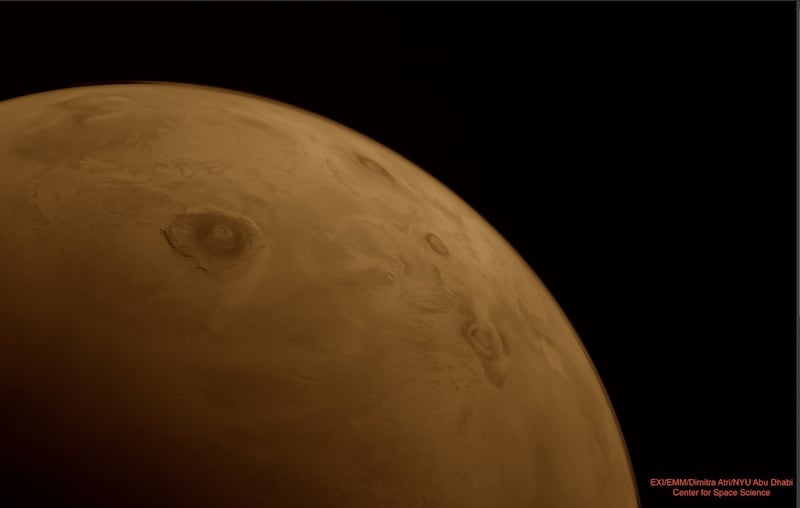The UAE’s Hope probe has captured a striking image of Mars's largest moon.
Phobos, one of the two mysterious satellites that circle the Red Planet, is clearly visible above the Martian surface.
Space enthusiast Andrea Luck spotted the 22 kilometre-wide rock when he was processing images taken by Hope.
“I was making an animation when I realised that there was a dark spot between Valles Marineris and the Schiaparelli crater,” he said.
“We were wondering if it was the shadow or the satellite itself. Upscaling the image further, it turned out to be solid, not flat.
“It was Phobos. It was exciting to see it emerging from this image.”
Phobos and its fellow satellite Deimos are some of the smallest moons in the solar system. They have puzzled scientists for many years because of their strange composition and orbit around Mars.
Phobos, which takes its name from Greek mythology, circles Mars just 6,000 kilometres above the planet's surface.
It is getting closer to the planet by 1.8 metres every hundred years, and if it continues at this rate, it will either crash into Mars in 50 million years or break up.
The Hope probe captured the image on August 16, when it was about 20,000 kilometres above the planet.
The spacecraft’s unique orbital position around Mars has allowed it to observe the planet from much further away than any other previous missions.
This helps the probe “see” the planet during different times of the day and capture data that is helping scientists study its mysterious atmosphere and dynamic weather, and understand how and why the planet dried out.
Since arriving to orbit on February 9, 2021, the spacecraft has captured thousands of images, including Mars's stunning geographical features and atmospheric conditions.
Dimitra Atri, a research scientist at New York University Abu Dhabi, has created an atlas of Mars using these images.
The 88-page atlas, which was published online on the first anniversary of Hope’s arrival to Mars, aims to show how the planet changes over time.











